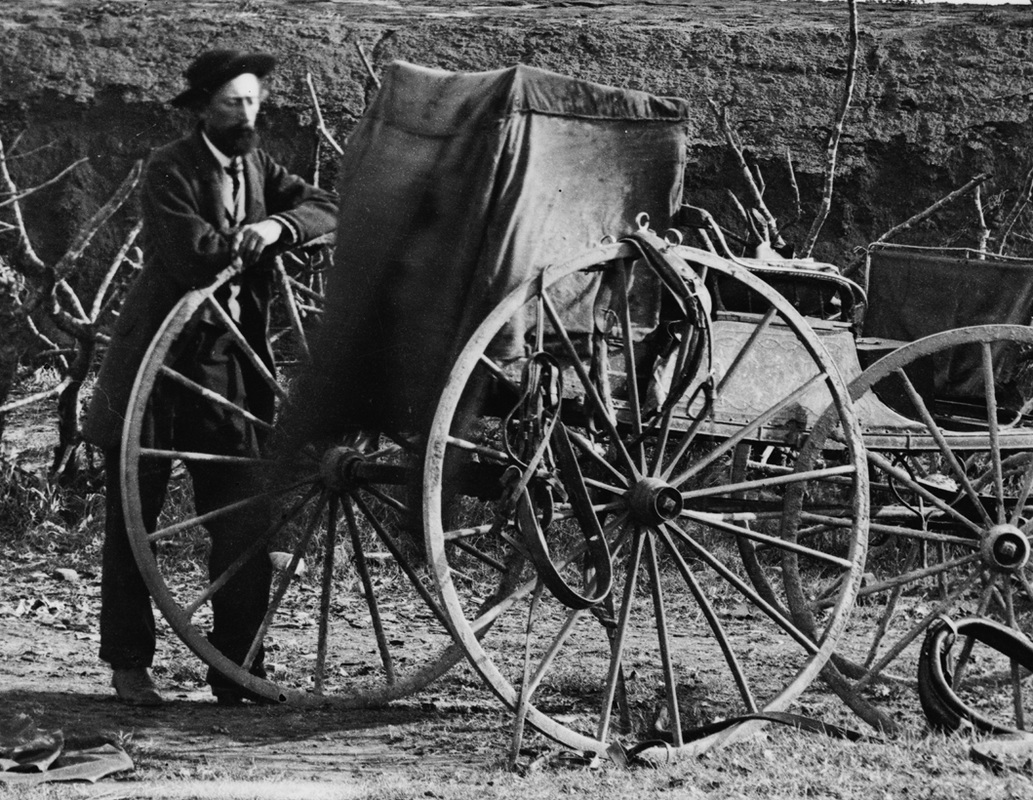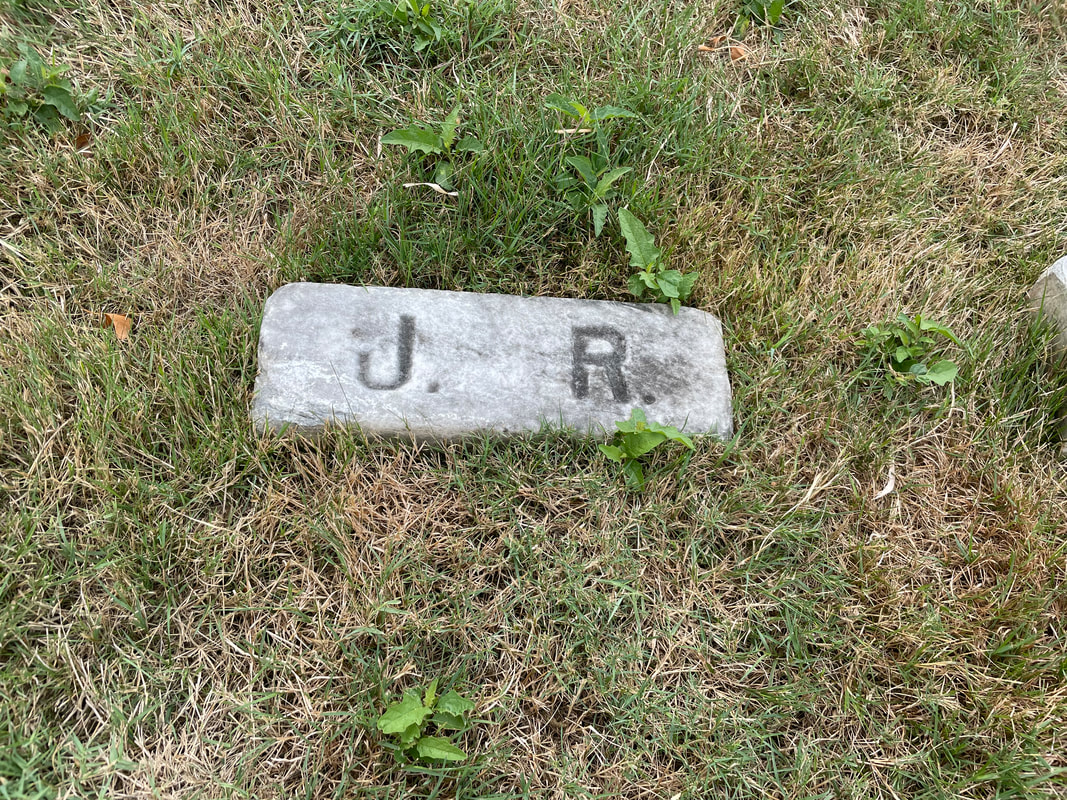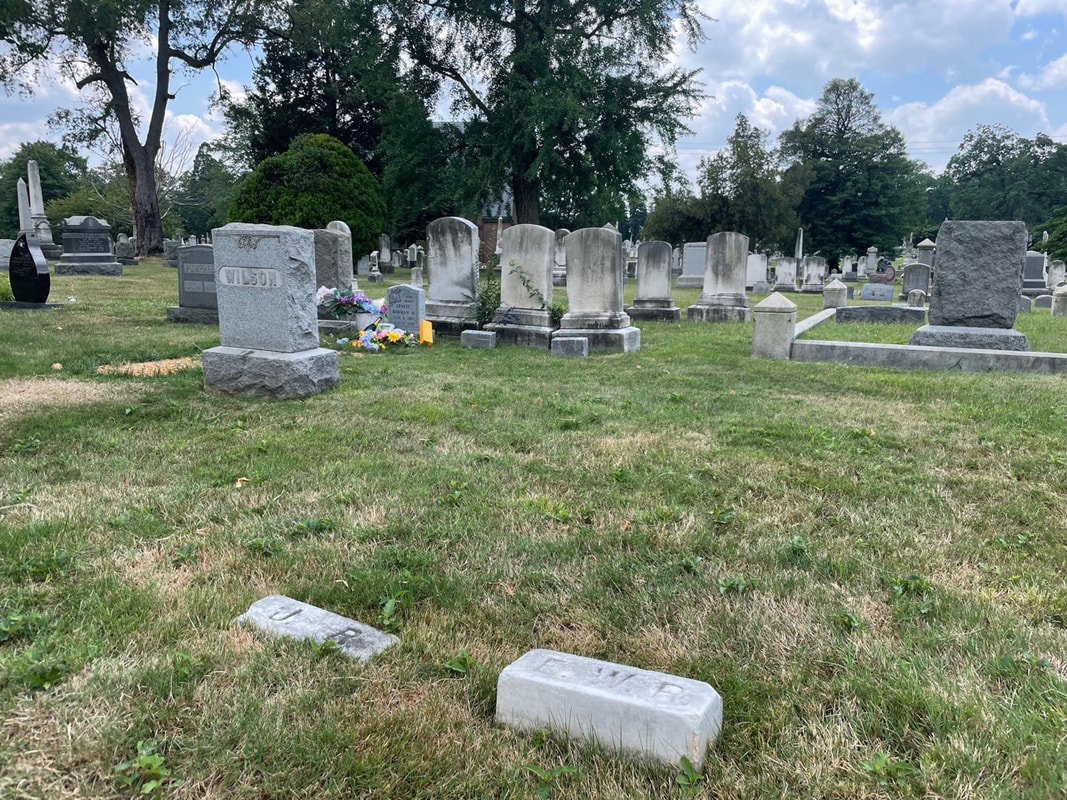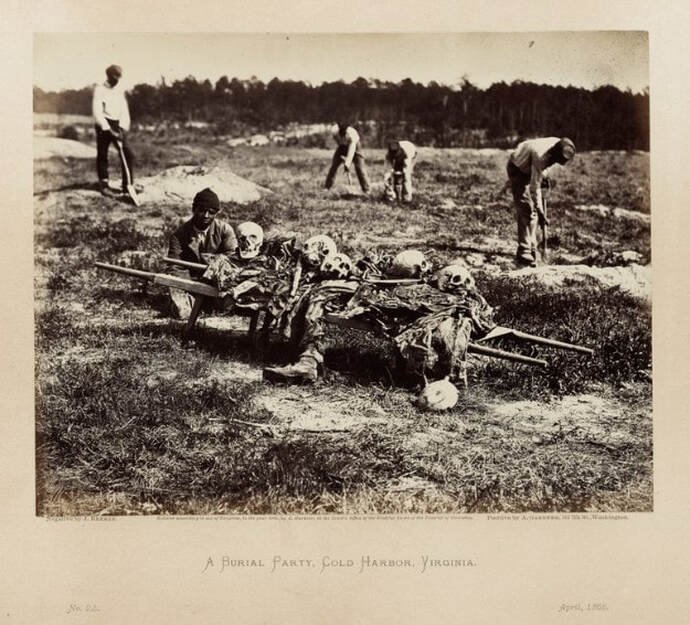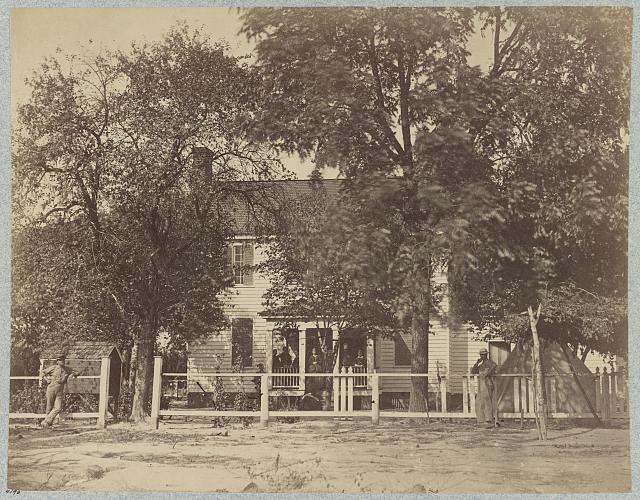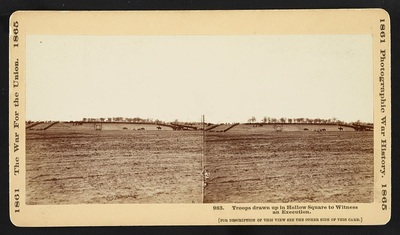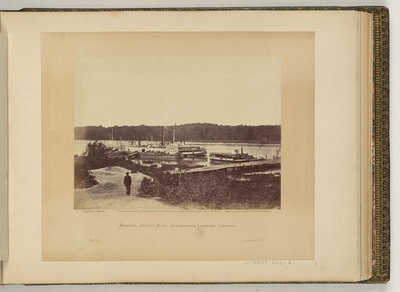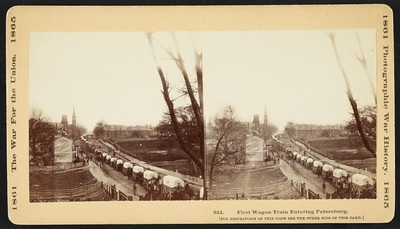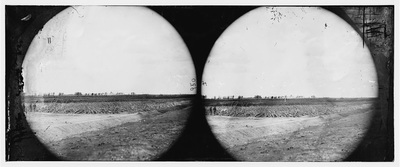THE PETERSBURG PHOTOGRAPHS
John Reekie, Photographer at Petersburg
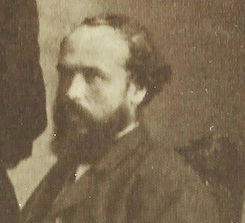 Photographer John Reekie, from an image showing officers of the St. Andrews Society, November 1865. Katz, Witness to an Era (1991), page 231.
Photographer John Reekie, from an image showing officers of the St. Andrews Society, November 1865. Katz, Witness to an Era (1991), page 231.
Photographer John Reekie (1829-1885) and his wife Margaret were living in Washington DC, 7th Ward, according to the US 1860 census. Both were born in Scotland, possibly in or near Refrewshire outside of Glasgow--he in about 1829 and she about 1832.The couple emigrated to America in the mid-1850's. A Georgetown directory of 1858 listed Reekie's occupation as stone-cutter. The couple settled where they knew others from their Scottish community. These included soon-to-be noted Civil War photographer Alexander Gardner and his associate David Knox, both Renfrewshire in origin, residing in the District of Columbia. Gardner, Knox, and Reekie were all officers of the St. Andrew’s Society in DC, a group devoted to promoting Scots’ contributions to America and helping recent immigrants settle into a new life. Alexander Gardner began working for Mathew Brady when the Civil War broke out and then set up his own studio. In the need for assistants, he drew fellow Scots Reekie and Knox into his stable of technicians. The two men may well have learned the craft of photography from Gardner. Reekie and Knox were credited, among other photographers in Gardner's employ in Gardner’s Photographic Sketch Book of the War (1866). Reekie may be best known for “A Burial Party, Cold Harbor,” that depicts the gathering of bones of the dead from the Cold Harbor battlefield. Reekie continued to work with Gardner after the war on several Western expeditions. After Margaret died, John Reekie married Elizabeth Wilding in 1881. John Reekie died April 6, 1885, from pneumonia and was buried in Glenwood Cemetery, Washington, DC, beneath a simple oblong stone etched “J.R.” Elizabeth is interred next to him as “E.W.R.” His mentor and patron, Alexander Gardner, is buried just a few hundred yards away. --DL
John Reekie is buried in Glenwood Cemetery (Section G, Lot 219), Washington, D.C.
John Reekie is buried in Glenwood Cemetery (Section G, Lot 219), Washington, D.C.
A biography on the St. Andrews University website states, "John Reekie b. about 1829 fl in 1882 Appears in US census, 1860, living in 7th Ward Washington City, aged 31, born in Scotland. Associate of Mathew Brady and Alexander Gardner, qv. His work appears in AG 's Photographic Sketchbook of the Civil War, 1866. He figures in a group photograph with AG, 'Officers of the St Andrews Society ', illustrated in D. Mark Katz, Witness to an Era. He was a Freemason, and one of the committee to 'consider and report proper action in regard to the death of our late Brother [ie Alexander Gardner] ' in 1882 Lit: Joseph M Wilson, A Eulogy on the Life and Character of Alexander Gardner..., Lebanon Lodge, Washington, 1883; D. Mark Katz, Witness to an Era. The Life and Photographs of Alexander Gardner, Viking, New York, 1991, p. 231.
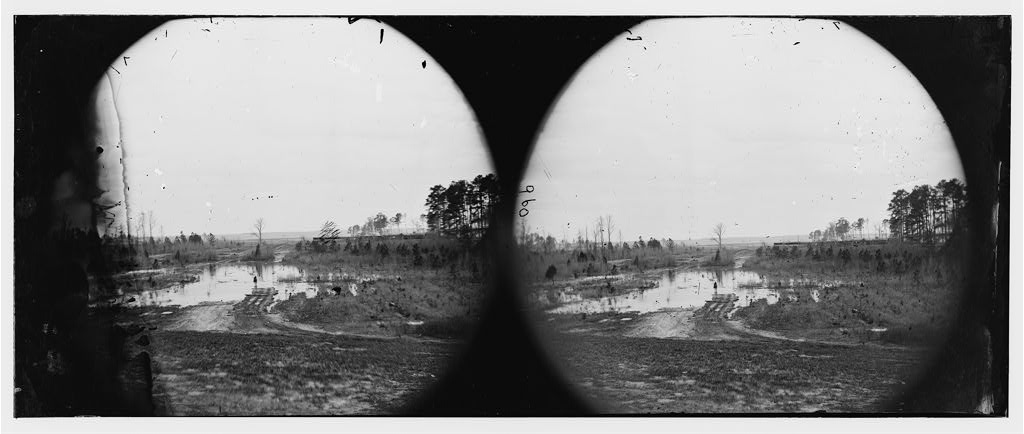
LC 00475. "[James River, Va. Point where Army of the Potomac crossed in June 1864 (Wyanoke Wharf?)]" The label is likely spurious. The image shows a corduroy road crossing a flooded stream, a stockaded camp on the right, and a lone rider. In the distance is a long, low ridge. Photograph by John Reekie.

